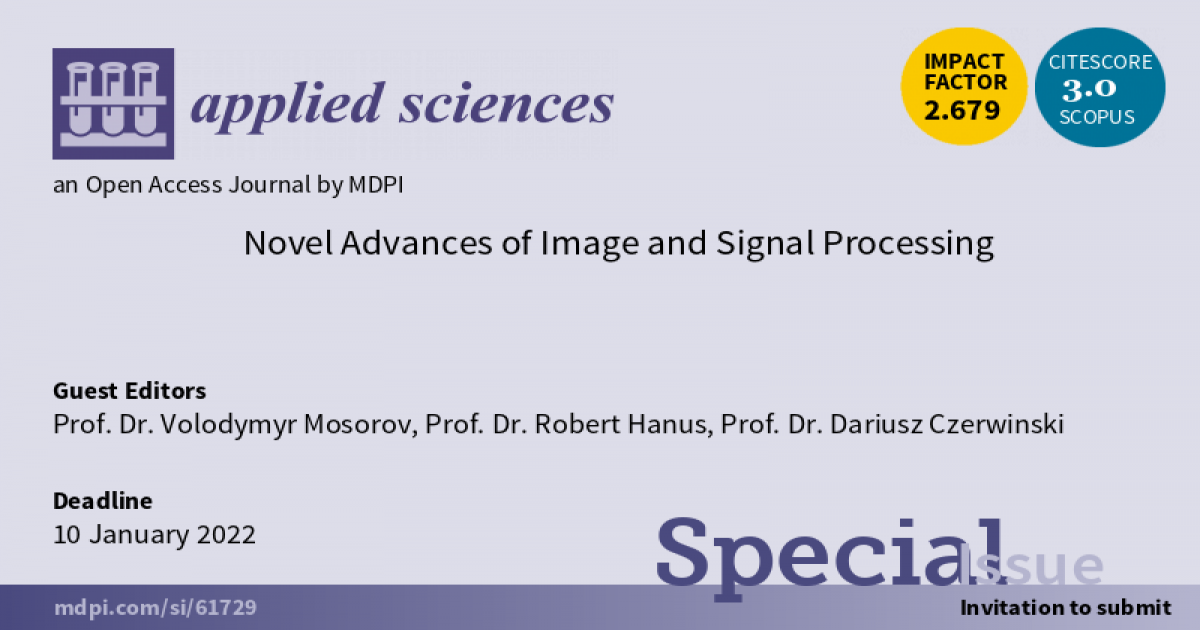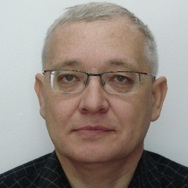Novel Advances of Image and Signal Processing
A special issue of Applied Sciences (ISSN 2076-3417). This special issue belongs to the section "Computing and Artificial Intelligence".
Deadline for manuscript submissions: closed (10 January 2022) | Viewed by 23288

Special Issue Editors
Interests: process tomography; applied radiation; medical measurements; image and signal processing
Special Issues, Collections and Topics in MDPI journals
Interests: Signal processing; metrology and measurement systems; analysis of random signals
Interests: Cloud computing; data security in network systems, data mining systems; artificial neural networks; wireless sensory networks; Internet of Things; numerical modeling of electromagnetic devices
Special Issue Information
Dear Colleagues,
In the last few decades, we have observed rapid advances in technologies that utilize computational intelligence in signal processing, computing, imaging science, artificial intelligence, and their applications. This advance is toward using artificial intelligence and machine learning based on computation, e.g., neural networks, evolutionary algorithms, fuzzy systems, and automatic medical identification systems. Therefore, it is important to explore recent trends in these research areas and applications around the world. Application areas include, but are not limited to:
- Image and video processing: image filtering, restoration and enhancement, image segmentation, video segmentation and tracking, feature extraction and analysis, motion detection and estimation, computer vision, pattern recognition, and content-based image retrieval;
- Signal processing: spectral analysis, time-frequency and time-scale representation, statistical signal processing, filtering, detection and estimation, nonlinear signal processing, radar, antennas, telecommunications systems, and acoustics;
- Biomedical signal processing: EMG, ECG, biometric and biomedical imaging, remote sensing, and other applications.
In this Special Issue, we invite submissions concerning the development of novel algorithms of image and signal processing for the Internet of Things platforms. Survey papers and reviews are also welcomed.
Prof. Dr. Volodymyr Mosorov
Prof. Dr. Robert Hanus
Prof. Dr. Dariusz Czerwiński
Guest Editors
Manuscript Submission Information
Manuscripts should be submitted online at www.mdpi.com by registering and logging in to this website. Once you are registered, click here to go to the submission form. Manuscripts can be submitted until the deadline. All submissions that pass pre-check are peer-reviewed. Accepted papers will be published continuously in the journal (as soon as accepted) and will be listed together on the special issue website. Research articles, review articles as well as short communications are invited. For planned papers, a title and short abstract (about 100 words) can be sent to the Editorial Office for announcement on this website.
Submitted manuscripts should not have been published previously, nor be under consideration for publication elsewhere (except conference proceedings papers). All manuscripts are thoroughly refereed through a single-blind peer-review process. A guide for authors and other relevant information for submission of manuscripts is available on the Instructions for Authors page. Applied Sciences is an international peer-reviewed open access semimonthly journal published by MDPI.
Please visit the Instructions for Authors page before submitting a manuscript. The Article Processing Charge (APC) for publication in this open access journal is 2400 CHF (Swiss Francs). Submitted papers should be well formatted and use good English. Authors may use MDPI's English editing service prior to publication or during author revisions.
Keywords
- big data computing
- intelligent algorithms
- intelligent and learning control
- biomedical and biological signal processing
- embedded systems for signal processing
- system modeling and simulation, dynamics, and control
- signal, audio, and speech analysis and processing







